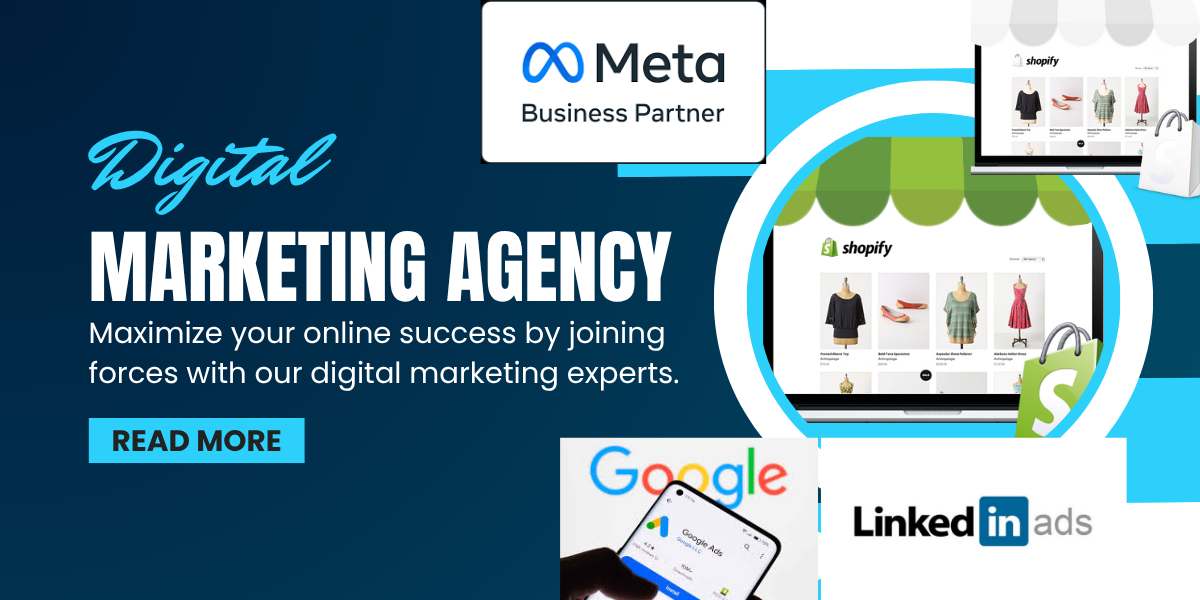Professional E-commerce Marketing Agency | Grow Your Store
🛒 E-commerce Marketing and Design Services
In today’s competitive digital world, running an online store is not just about listing products — it’s about creating a seamless shopping experience and driving consistent sales through smart marketing strategies and attractive design. Professional E-commerce Marketing Agency
Below are the key services every successful e-commerce business should leverage 👇
🎨 1. E-commerce Website Design & Development
Your website is the face of your online store. A well-designed website helps you attract, engage, and convert visitors into loyal customers.
Services include:
- Custom, mobile-responsive website design
- User-friendly navigation and layout
- Fast loading pages and secure checkout
- Product page optimization (images, descriptions, reviews)
- Integration with payment gateways (UPI, PayPal, Visa, MasterCard)
- Platform development (Shopify, WooCommerce, Magento, Wix, etc.)
Goal: Build a stunning, conversion-focused website that enhances user experience and trust.
💡 2. Search Engine Optimization (SEO) for E-commerce
Ranking high on search engines drives organic traffic and long-term sales.
Services include:
- Keyword research for product pages
- On-page SEO (titles, meta tags, product descriptions)
- Technical SEO (site speed, mobile optimization, URL structure)
- Schema markup and image optimization
- Content marketing for blogs and landing pages
Goal: Improve visibility on Google, attract qualified buyers, and boost organic sales.
📢 3. Pay-Per-Click (PPC) Advertising
Get instant traffic and sales through paid campaigns on search engines and social media.
Services include:
- Google Shopping Ads & Search Ads
- Meta (Facebook & Instagram) Ads
- Retargeting and remarketing campaigns
- Performance tracking and conversion optimization
Goal: Drive immediate visibility, traffic, and higher ROI through data-driven ads.
💻 1. Search Engine Optimization (SEO)
SEO helps your website rank higher on Google and other search engines.
It involves:
- Keyword research
- On-page optimization (titles, meta tags, content)
- Technical SEO (site speed, mobile optimization)
- Backlink building
Goal: Increase organic (free) website traffic.
💰 2. Pay-Per-Click Advertising (PPC)
Businesses pay each time someone clicks on their ad. Common platforms:
- Google Ads
- Meta (Facebook & Instagram) Ads
- YouTube Ads
Goal: Drive instant traffic and conversions through paid campaigns.
📱 3. Social Media Marketing (SMM)
Using social platforms to build brand awareness and engage with audiences.
Popular channels:
- X (Twitter)
- TikTok
Goal: Build relationships, increase followers, and drive leads or sales.
🛍️ 4. Content Marketing
Creating and sharing valuable content to attract and retain customers.
Includes:
- Blog posts
- Infographics
- eBooks
- Case studies
- Videos
Goal: Educate and nurture potential customers through useful content.
✉️ 5. Email Marketing
Sending personalized emails to your subscribers or customers.
Used for:
- Promotions and discounts
- Newsletters
- Product updates
- Customer retention
Goal: Build customer loyalty and increase repeat purchases.
🔍 6. Search Engine Marketing (SEM)
A broader form of marketing that includes both SEO and PPC.
It focuses on improving visibility in search engines through:
- Paid ads (Google Ads)
- Organic ranking (SEO)
Goal: Capture users actively searching for products/services.
🎥 7. Video Marketing
Using videos to promote products or explain services.
Platforms:
- YouTube
- Instagram Reels
- TikTok
- Facebook Video
Goal: Boost engagement and brand storytelling through visual content.
🤝 8. Affiliate Marketing
Partnering with affiliates (influencers, bloggers, marketers) who promote your products and earn a commission per sale.
Goal: Expand reach and drive sales through partnerships.
⭐ 9. Influencer Marketing
Collaborating with influencers who have loyal followers to promote your brand.
Works best on:
- YouTube
- TikTok
Goal: Gain trust and reach new audiences quickly.
📩 10. Online Reputation Management (ORM)
Managing your brand’s online presence through:
- Reviews and feedback
- Public relations
- Social media monitoring
Goal: Maintain a positive image and customer trust online.
🧠 11. Marketing Automation
Using software tools (like HubSpot or Mailchimp) to automate repetitive tasks such as:
- Email campaigns
- Social media posting
- Lead nurturing
Goal: Save time and improve marketing efficiency.
Online Store Design & Marketing Solutions | Drive Conversions
